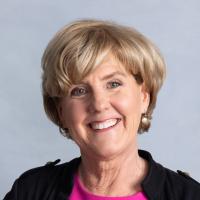The New Family Business Powerhouses: Wives and Moms

Today women hold leadership positions in government, head up Fortune 500 companies, and oversee countless philanthropic programs. Yet in many successful family businesses, the roles of women remain hindered by longstanding conventions and complex intergenerational dynamics. The mythical heroic patriarch looms large in many families, and women, if they are acknowledged at all, play supporting roles in these family sagas and rarely are they given a voice in their own stories.
In the past few years, it has been the matriarchs and distinguished female leaders of the families that have been the key decision makers on choosing to work with my firm Pitcairn, a multifamily office based in the suburbs of Philadelphia. That intrigued me and made me want to know more about these women. So, my colleague Dennis Jaffe and I interviewed 40 North American women, half of them from the initial generation of family wealth and the rest from later generations. We were interested in understanding these women, not just collecting data points, so our research revolved around conversations and resulted in our book Finding Her Voice and Creating a Legacy.
The stories they told serve as the foundation for powerful findings that offer a fresh and meaningful new look at women’s roles in family enterprises. It shows them not as wives and daughters quietly and passively observing the wealth management of the family, but as complementary and assertive partners to their spouses and respected leaders within their families.
Lesson One: Gender Is Not Destiny
One of the primary observations we made is that women in family businesses perceive and act differently than men and tend to approach their work and lives in contrasting ways— even if this isn’t clearly defined. Above all, women want to be treated fairly in relation to access and control of family assets, and to have artificial barriers within the family removed. As this happens, women’s power and influence within families will increase, although their approach to acquiring these benefits will differ from that of their male counterparts.
These pioneering women are breaking longstanding barriers of communication and connection and rewriting the rules of leadership with a focus on family and the future in the process. Regardless of their age, we call them the “new matriarchs,” by which we mean women who forge their own paths in advancing the financial success, culture, and values of their families with a focus on partnering with their spouse and preparing their children for a life of passion, purpose, and family harmony. They are advocates and models of greater equality, as well as examples of what women’s sensitivity and gender experience can bring to family leadership.
Our definition of the “new matriarch” is pioneering women who are breaking longstanding barriers of communication and connection and rewriting the rules of leadership with a focus on family and the future in the process.
Lesson Two: Let Children Be True to Their Natures
One common thread among all these women was the emphasis on relationships. Through nurturing, trusting, caring, and supportive relationships, female family leaders influenced and contributed to the family enterprise.
Another element they have in common is a focus on work ethic and empowering children to find value in employment. They encourage children to work early, often in the family enterprise. One of the ways women are reshaping family dynamics is by fostering family conversations. They initiate family meetings, shared family activities, and family policies about decisions to organize the future and build cooperation within and across generations.
The specifics differ from family to family, but nearly every woman we spoke to mentioned some way in which they were active in challenging the traditional roles. They also wanted their daughters to know that their careers and passions counted and should be respected.
They view their children, both male and female, as individuals with their own strengths, weaknesses, passions, and abilities and try to avoid ingrained gender stereotypes. When one of the women in the book went to talk to her grandfather about college, his response was along the lines of, “What in the world do you want all that education for? You’re just going to get married and have babies.” So, she paid for it herself and went off and built a life for herself in an area where no one knew her family. But eventually, she was asked to become the family’s financial leader after her brother, who had been running the family office, made some poor financial decisions.
Lesson Three: Soft Power Can Be Highly Effective
In our research, we learned how these women successfully managed the dual roles of business partner and primary parent by using soft power as the family’s emotional steward or CEO (Chief Emotional Officer). One woman charted a path for herself and her children in the family business. As those roles evolved, she focused on building structures that helped to develop cohesion and set up subsequent generations for success.
Another study participant, who like her husband works in the financial industry, observed: “The first-generation matriarch is a pivotal person in the life of the family and in the mental health of the children more than the entrepreneur. The entrepreneur can be a dictator or largely absent at home. If the matriarch is loving and accepting, those kids are okay. If the matriarch is judgmental and cold, those kids are screwed.”
Lesson Four: There Is No Defined Role for the Second Wife
Several of the women married business creators with children from an earlier marriage; they were often new to the level of wealth in their new family. There’s no defined role for a “second wife” and there’s a good chance that she may invite conflict with the rest of the family. The new spouse can be considerably younger and be seen as a competitor or intruder by the children, especially if the children are older. The new spouses in our study didn’t want to remain disconnected from their new stepchildren or act as a distant rival for their father’s affection. They defined positive, distinctive contributing roles to the business and the family that avoided or overcame conflict. In most of the families, the new wife understood the potential for conflict and so she actively reached out not only to connect with the stepchildren, but also with her new husband’s former wife.
Lesson Five: Succession Is More Complex for Women
Although women are on track to inherit a major share of wealth over the coming years, the women we interviewed rarely began with direct influence over their inherited wealth, which is often controlled by trustees or men in the family. Even when they do have control, women inheritors can be tentative, lack confidence in their decisions and authority, or downplay their influence. Since they don’t expect to be responsible for the wealth, they may disregard getting prepared or educated on the subject. But because they see that wealth has implications on their and their family’s health and wellbeing, women heirs are increasingly taking an active leadership role in their family’s wealth.
About half the rising generation of women we interviewed became family enterprise CEOs—as the formal leaders of the family business or family office -- while the other half became less-visible leaders (in their family office or financial affairs). Succession is an issue for every family enterprise, but for women it appears that the road is far more circuitous and complex. Patriarchy is a tradition in the family business, not only for parents and perhaps siblings, but also for employees and the business community. Tradition doesn’t shift easily. So, women leaders cannot assume they’ll be embraced as legitimate leaders, even if their professional skills make them appropriate, suitable, and more than capable. The succession process into leadership for either gender is a progression of steps that begin with introducing a young family member to the family enterprise. But women face complexity and resistance that males do not.
Lesson Six: Good Governance Brings Families Together
Family governance has two key elements: (1) defining practices for shared family activities and decision-making; and (2) developing values and practices for education and advancement of the next generation. Most of the families we studied established some form of governance in their second or third generations. And as champions of change in family culture, and in learning from past family conflict and unclear decision-making, the women inheritors played an active role in making that happen. An egalitarian culture in a family is defined by governance structures that affirm and recognize this reality, and the women leaders exercised leadership to redefine some of the ways that families make decisions about business and wealth.
Family governance differs from business and financial governance in that it refers to the organization, planning, and decision-making of purely family activities— which include family development, values, and policies for connection to their family enterprises. Such governance allows the family to transition into a different form by changing the structure and mix of its business and designing the family activities.
Conclusion
The women in our study all hold an integrated, connected, inclusive, and meaningful view of the rationale and possibilities of family enterprise. By listening to them, we see how families can use their wealth in a way that creates harmony rather than division. Their sensitivity and struggle offer a picture of leadership that connects family and business. By hearing their stories, we learn about families that have been able to grow and innovate, at a time when resiliency and adaptation is necessary for every family enterprise. We hope that every family enterprise can learn from these stories, and even measure themselves against some of the yardsticks that the families in our study have proposed.
Learn More
Finding Her Voice and Creating a Legacy: Portraits of Pioneering Women Leading Wealthy Families, By Amy Hart Cline and Dennis Jaffe, Pitcairn, September 2021
Amy Hart Clyne, CFP® is Chief Knowledge and Learning Officer at Pitcairn, an almost century-old multifamily office, where she empowers wealthy families through family education while pioneering research and best practices that elevate the role of advisors to one of true partnership.






